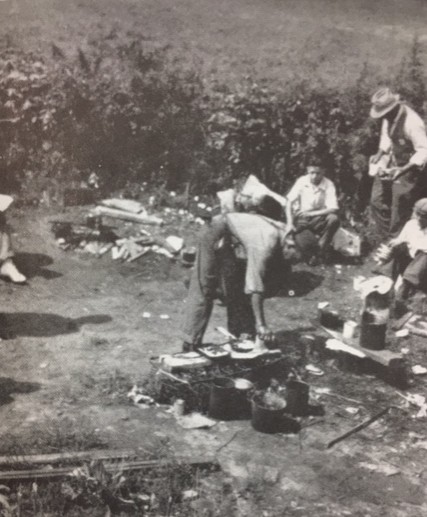Human Migration Meets Extreme Weather: Winter 1935-36
Hamilton county, Iowa

The winter of 1935-36 is famous in the North American Midwest, and Hamilton County, Iowa, is no exception. Although the election day storm November 8, 1932, is memorable for the obstacles it created for voters trying to get to the polls, the winter of 1935-36 was a sustained immersion in sub-zero temperatures and blowing snow. Only one day in January and February saw temperatures above the sub-zero mark, and that one day recorded a high of just exactly zero degrees. The shortage of coal, used for heating, closed the schools for three weeks. What coal remained in the hands of school officials they gave to county families most in need. Shortage of coal and difficulty in movement also closed churches, stopped trains, and prohibited mail delivery from February 7 through the 20th. When the following summer turned especially hot and a drought developed, the result was not only a poor crop yield and economic hardship but also a citizenry reeling from the weather extremes.
Perhaps no people were more vulnerable then and are more vulnerable now than those who lack shelter. While Hamilton County residents hunkered down in January and February 1936, staying home, conserving coal and food, those hobos–traveling men, as they liked to be called—who had not hopped freights to warmer states before the winter began were left to make the best of a bad situation. When the Salvation Army shelter was full, traveling men went to flop houses, the worst and cheapest charging 10cents per day. Sometimes three men slept on the filthy mattress in three shifts in the “wooden boxlike cubicles” so that they could share the cost of the 10cents/day. Even so, flophouses were preferable to unheated warehouses, make-do tents, cardboard boxes, tunnels, and underpasses beneath bridges. If a man found a sidewalk coal chute grate on which to put his cardboard box, he could get the benefit of some heat escaping coal boilers and pipes.
Across the country, in the depths of the economic depression, men and some women rode boxcars and hitchhiked looking for work and better lives and collecting along the way in make-shift communities. In Hamilton County one such “hobo jungle” was so-called Happylands on the west bank of the Boone River below Zublin. When the river wasn’t frozen, the fishing was good there.
But there was no Salvation Army soup kitchen at the site to supplement the fish—when they could be caught. Those without any work were especially vulnerable. Bakeries in the county would offer traveling men and women three-day-old bread; groceries gave them old milk and produce; most restaurants saved them leftovers. While in warm months some residents let the travelers pick from their gardens, the winter, especially a long and hard winter, offered no such possibilities. What food travelers could collect was taken back to the camp and made into a stew that all shared. Homer Andrum remembers that a friend’s mother always gave the travelers food from her garden, canned vegetables, bread, sometimes even eggs from the henhouse. One day she even washed two boys’ clothes because they were searching for work and needed to look as good as possible.
Sources: SHSI: Shannah Nelson, Stratford Iowa and Community: 1840-1960, 1970; Homer R. Andrum, Bittersweet Years Smiling Through Tears: 1920-1941, 1993.
